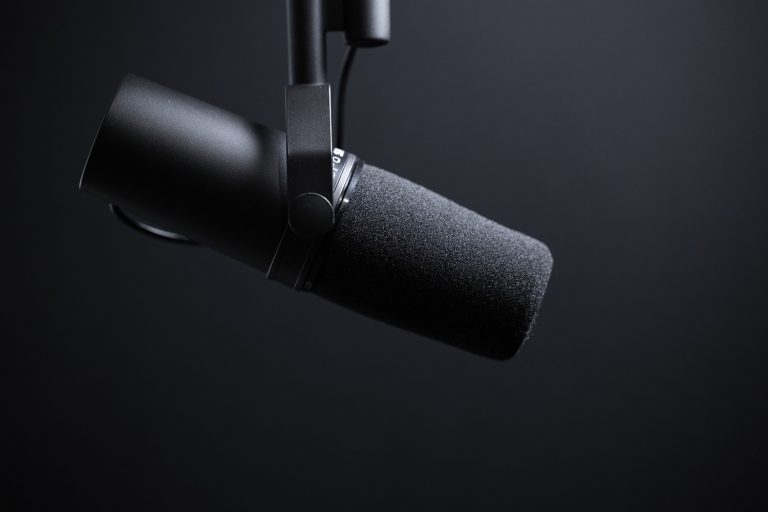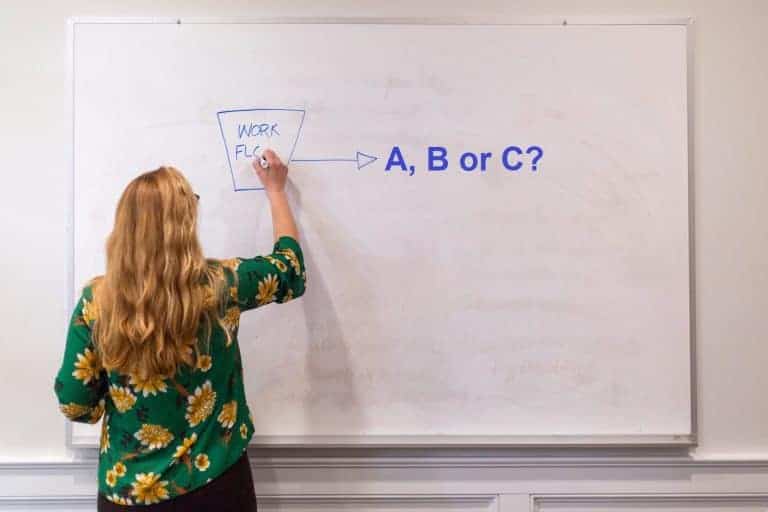Cambridge A2 Key in 2020
English language exams are now very popular everywhere in the world. Many young people and adults take the exam every year because of many different reasons. For example, in Spain, where I live, there are a lot of English schools and a lot of students take A2 Key.
With all the different Cambridge exams, A2 Key can be a great start. In this article, I am going to show you everything you need to know about the test. You will learn the answers to these questions:
- What does A2 mean?
- Why should you take A2 Key?
- What does the exam look like?
- What are the different options to take the exam?
- Where can you prepare for A2 Key?
Now I have said enough. Let’s get started.
What does A2 mean?
If you want to learn what your English level is, you can check a system called CEFR. This system describes different levels of English and tells you what a person at each level can do with their English. In the CEFR, there are six different levels. They start with level A1 and move up to C2.
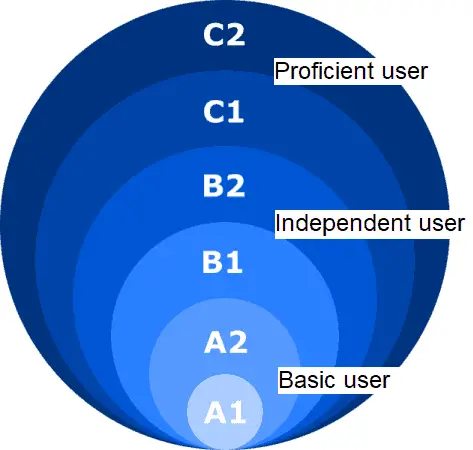
With level A2, you are a basic user of English and you can do the following things with the lanaguage:
- You can understand language that we often use in English, for example, when we talk about topics of your daily life (personal information, family, friends, work/school, shopping, etc.)
- You can use language when talking about these topics.
- You can describe aspects of your personal background, your environment and the things you need in your normal life.
If you pass Cambridge A2 Key, you can do everything on the list. Do you think you can already do these things or do you need to practise a little bit more? 🙂
Why is A2 Key a good exam for you?
Many people, and especially children and teenagers, take A2 Key. In my opinion, there are two big reasons why it can be a good exam for you.
Improve your English language skills
Cambridge exams test every skill of the English language: reading, writing, listening and speaking. If you want to get a good result in the exam, you have to practise a lot and work on these skills because without practice you will probably fail the test.
Studying for A2 Key can help with the different language skills because the different tasks test many different areas of your English. There are five reading tasks, two writing texts, five listening parts and two activities in the speaking test. You can see that you need to prepare to get good results and all the practice will improve your English.
Learn how Cambridge exams work
The second reasons why A2 Key can be a good exam for you is that Cambridge designed all the different tests (A2 Key, B1 Preliminary, B2 First, C1 Advanced and C2 Proficiency) in a similar way. They test the same skills, you need to do it with strict time limits and even some of the tasks are very similar in all the tests.
For you, A2 Key can be a great starting point. You can get your first experience with Cambridge English tests and see how their exams work. You learn about the different kinds of tasks and tips and tricks that you can use again when you move on to the next level.
What does A2 Key look like?
Cambridge A2 Key has four parts which test the four main language skills in English, but in the exam, you do them in only three different papers:
- Reading and Writing
- Listening
- Speaking
In each paper, there are different tasks that you have to complete and in this part of the article, I’m going to show you what they look like.
Reading and Writing
Reading and Writing has seven total parts with five of them in the reading section and two writing tasks. Some of the reading parts test your understanding of a text, but other parts check how good your grammar and/or vocabulary is.
You have only 60 minutes to complete all seven tasks and you have to put your answers onto an answer sheet which you get at the beginning of the test. Because this takes around five minutes to do, you have around 55 minutes to answer all the questions or around eight minutes per task.
As Reading and Writing combines two sections of A2 Key, it counts 50% towards your total score at the end of the exam.
Part 1
In Reading and Writing Part 1, you have to read six short real-life texts, for example, emails, notices, text messages or public signs. With each text, you get three sentences and you have to check which sentence best reflects the main message of the text.
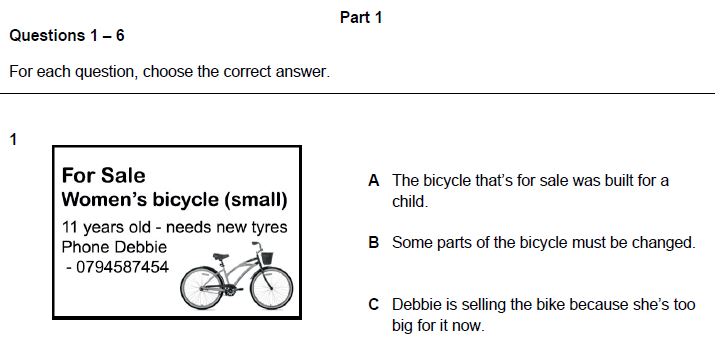
Part 2
In Part 2, you have to read seven questions and match them to three texts which all talk about the same topic.
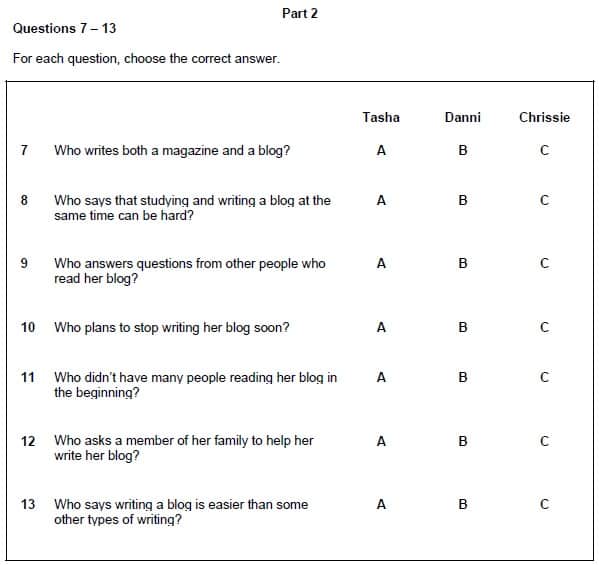
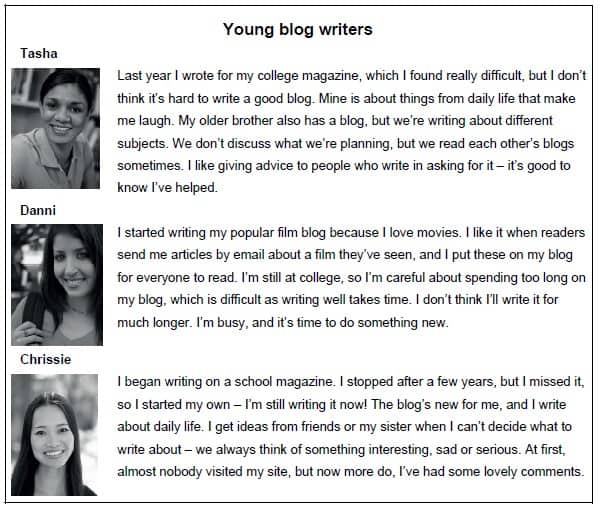
Part 3
Here, you have to read a longer text and answer five multiple-choice questions with three possible answers A-C.
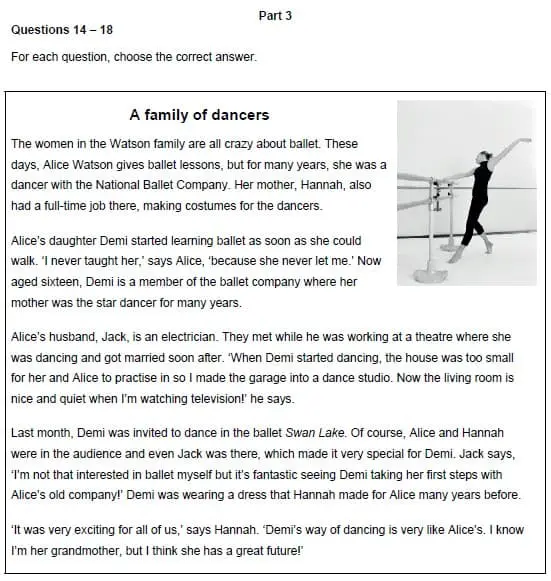
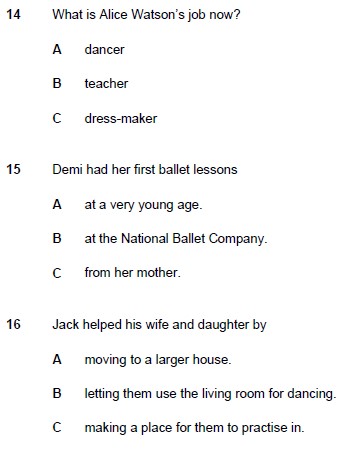
Part 4
In Reading and Writing Part 4, you need to read a shorter text with six gaps. You have to fill in those gaps by choosing from three possible options A-C.
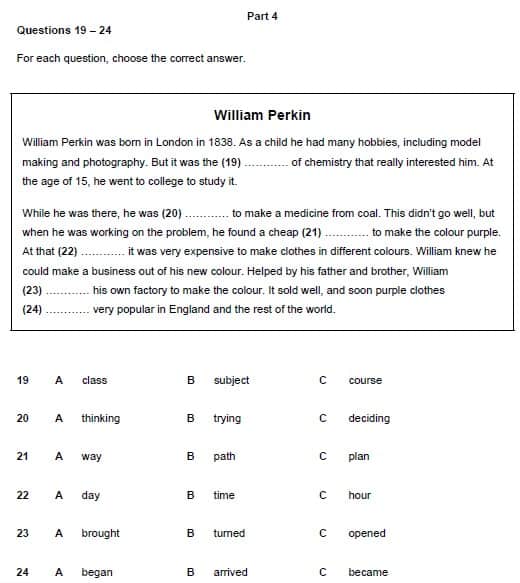
Part 5
In Part 5, you have to read a short email (and sometimes a reply as well) and fill in six gaps with one word in each. While there are options in Part 4, you don’t get any help in Part 5. You need to choose the missing words by yourself.
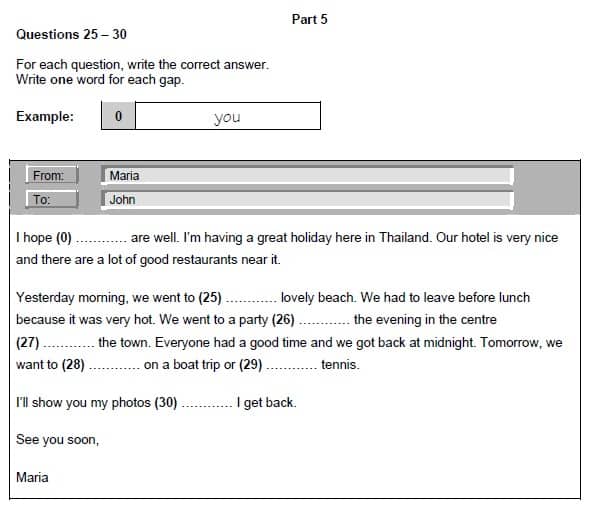
Part 6
Part 6 is the first writing task. You have to write a short email or note of at least 25 words. In the task, you get some information that you have to use in your text.
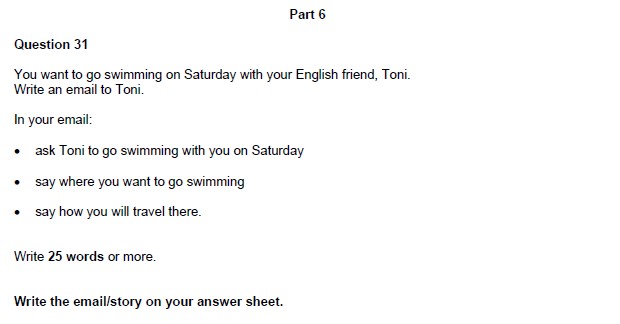
Part 7
Part 7 is the last part of Reading and Writing. Here, you have to write a short story of at least 35 words based on three pictures which you can find in the task.
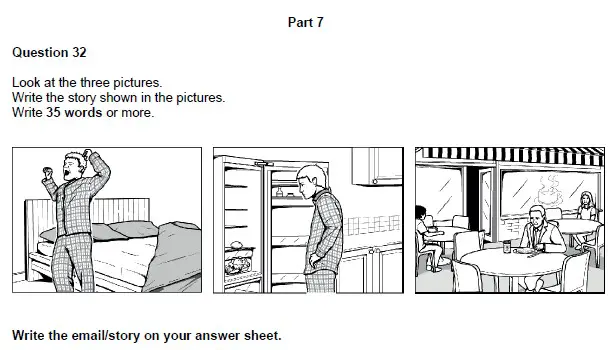
Listening
The Listening paper in A2 Key can be difficult for some students, but others have told me that they are OK with it. Just like with all the other parts, it is important that you start practising as soon as you can.
In this part of the exam, you have around 30 minutes to listen to five different recordings (You can listen to each recording twice.), answer all the questions and transfer them onto an extra answer sheet.
Because you have to listen to a lot of English, many people get tired and make mistakes, but you can prepare and train for the big day.
Part 1
In Listening Part 1, you listen to five short conversations. For each recording, you get one question and three pictures as possible answers. You have to decide which picture shows the answer to the question.
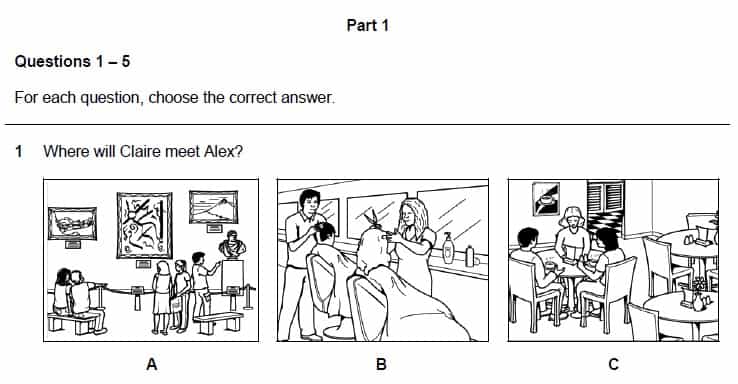
Part 2
You listen to one person talking about a specific topic. With the recording, you get some notes with five gaps and you have to fill in the gaps with one word, a number, a date or a time.
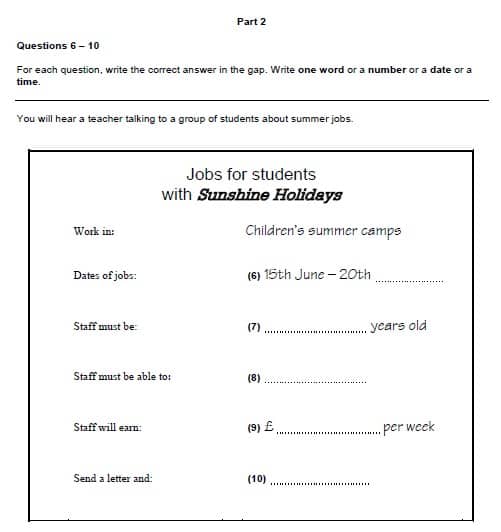
Part 3
In this part, you listen to a longer conversation between two people and you need to answer five questions. For each question, there are three possible answers A, B or C.
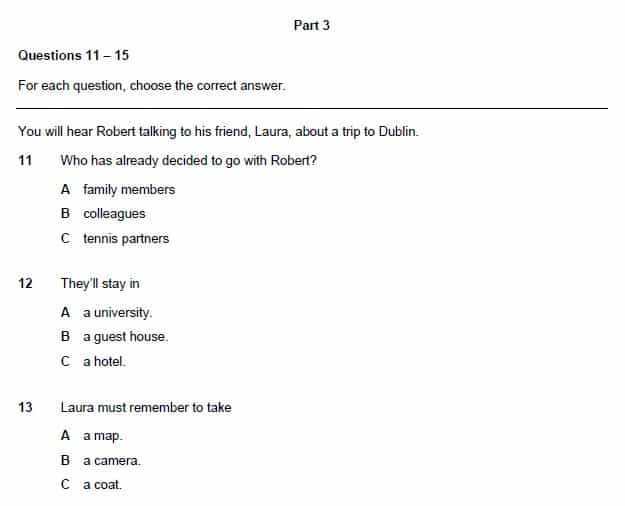
Part 4
Part 4 is similar to Part 3, but instead of one conversation, you listen to five different short recordings. With each recording, you get one question and three possible answers A, B or C.
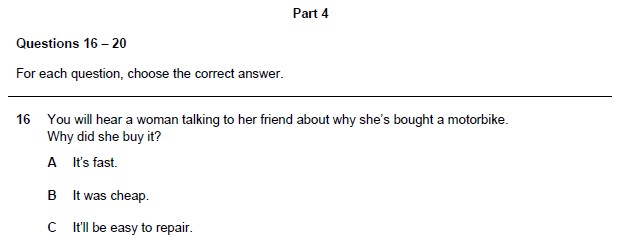
Part 5
Last but not least, you listen to a conversation and you have to match five different items to specific pieces of information. You have to be very careful because there are eight pieces of information so three of them you cannot use.
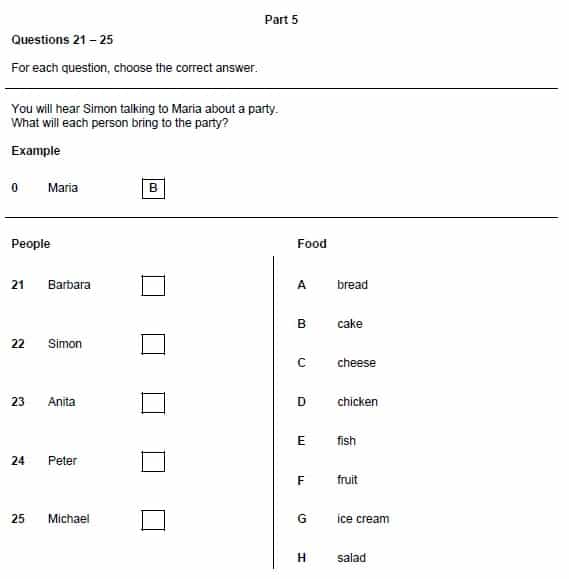
Speaking
The last part of A2 Key is Speaking. It usually works very well for my students because it is easy to practise and the structure of the test is always the same.
When you do the test, you get a partner so you do it in pairs (and sometimes in a group of three) and the whole thing takes around 8-10 minutes for two different parts. That’s it.
There are always two examiners in the room with you. One of them is called the interlocuter (they ask the questions) while the other one only listens carefully and takes notes. This way, they can work together to find the correct mark for you.
Part 1
In the first part of the test, the interlocutor asks you some questions about yourself. The topics include work/school, friends and family, hobbies, the place where you live, etc. Each student answers the questions individually so you don’t talk with each other.
This part is a little bit like a warm-up. The interlocutor tries to make you feel comfortable before you move on to the second part.
Part 2
The second part of the Speaking test has two phases. In the first phase, the interlocuter shows both candidates five pictures and you answer a question about them with your partner.
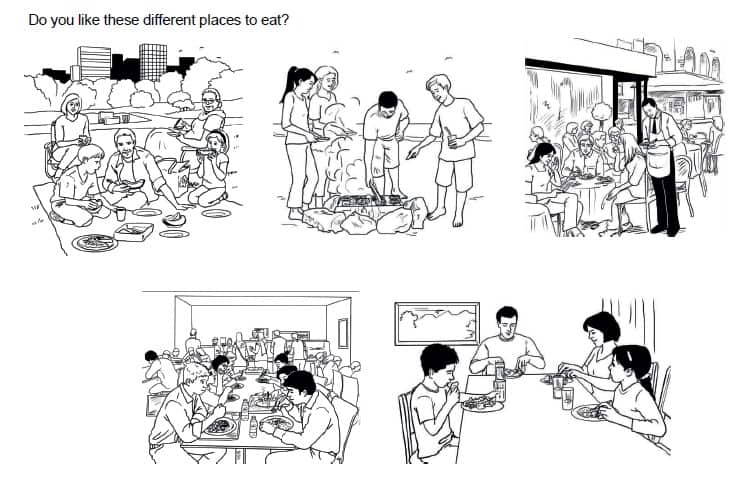
You can see that the topic is not difficult. Jut like in Part 1 of the Speaking test, you might have to talk about things you like or don’t like or your opinion on a topic.
You have 1-2 minutes to discuss the different pictures before the interlocutor asks you a few more questions about the pictures, for example, “Do you think eating on the beach is fun?” or “So ‘A’, which of these places to eat do you like best?”
In the second phase of Part 2, you have to answer two more questions about the same topic as in the pictures, but not specifically about the pictures, for example, “Do you prefer eating at home or in a restaurant?” or “Do you prefer eating with friends or family?”
This phase can take up to two minutes and then you are done. Please have a look at the video below. It is an official exam video by Cambridge English and you can get a good idea of how the Speaking test works.
The different A2 Key exams
In A2 Key, there is not only one exam that everyone has to take, but you can choose between different options. This way, you can decide which version of the test is perfect for you.
A2 Key for Schools
Cambridge does a very good job with this. In the A2 Key for Schools exam, the tasks and time limits are exactly the same as in the ‘regular’ test, but the topics are better for children and teenagers that go to school. This means that there aren’t any questions about work or university but more about school life, hobbies, things you like or don’t like, etc.
You can watch the video below to get some more information.
A2 Key computer-based
Cambridge offers some of their exams in two versions: paper-based and computer-based. As with A2 Key for Schools, there are no real differences between the paper-based and computer-based exam. The tasks and timings are exactly the same.
So, if you feel more comfortable writing on a computer, this could be an option for you.
Where can I prepare for A2 Key?
You can find test and preparation centres for the different Cambridge English exams everywhere around the world. They offer the option to book the exam and also classes for you to study and get ready for the test.
You can usually find the following logo somewhere outside the centre, which shows you that it is an official Cambridge test centre:

If you want to find a preparation centre near you, you can click HERE and check.
Summary
In this article, I showed you what A2 Key looks like, what level A2 means, different versions of the exams and how to find a preparation centre.
I hope that this information will help you and that you can start practising soon.
Lots of love,
Teacher Phill 🙂



